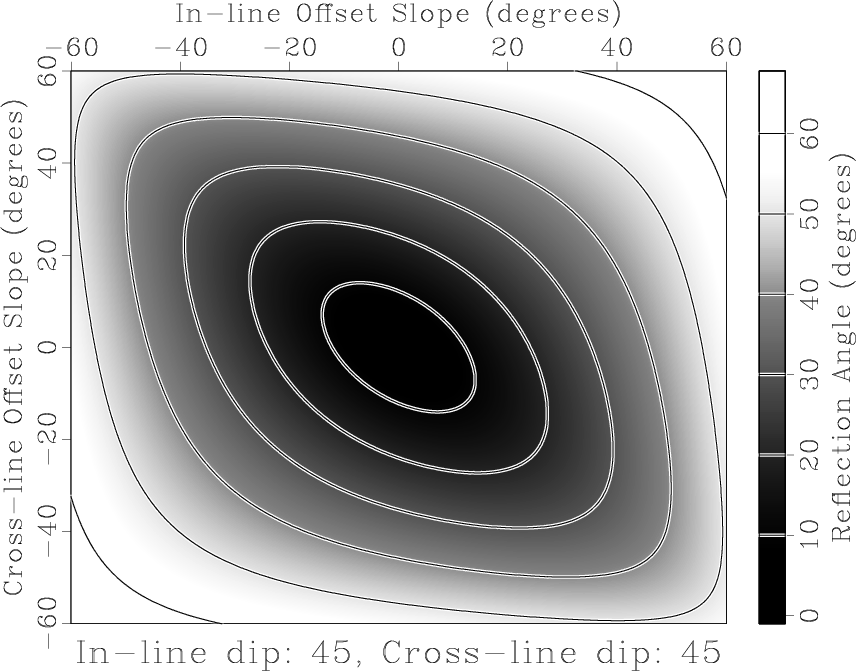 |
 |
 |
 | Theory of 3-D angle gathers in wave-equation seismic imaging |  |
![[pdf]](icons/pdf.png) |
Next: Discussion
Up: Fomel: 3-D angle gathers
Previous: Algorithm I: Angle gathers
The second algorithm follows from equation (16). It applies
after the imaging has completed and consists of the following steps applied at
each common-image location:
- Generate and store local offset gathers. In the double-square-root
migration, the local offsets are immediately available. In the shot gather
migration, local offsets are generated by cross-correlation of the source
and receiver wavefields.
- Estimate the dominant local structural dips at the common image point by
using one of the available dip estimation methods: local slant stack,
plane-wave destruction, etc.
- After the imaging has completed, transform local-offset gathers into the
slant-stack domain either by slant-stacking in the
 physical
domain or by radial-trace construction in the
physical
domain or by radial-trace construction in the
 Fourier domain (Sava and Fomel, 2003).
Fourier domain (Sava and Fomel, 2003).
- Using estimated dips, convert slant stacks into angles by applying
equation (16). The mapping from offset-depth slopes to angles
is illustrated in Figure 4.
The last two steps can be combined into one. It is sufficient to compute the
effective offset
 and
apply the basic 2-D angle extraction algorithm to the effective offset gather.
and
apply the basic 2-D angle extraction algorithm to the effective offset gather.

|
|---|
angl45-45
Figure 4. Mapping from the offset slope plane
to angles according to Algorithm II. Zero slopes map to zero
(normal-incidence) angle.
|
|---|
![[pdf]](icons/pdf.png) ![[png]](icons/viewmag.png) ![[scons]](icons/configure.png)
|
|---|
The second method is applicable to selected common-image gathers, which can be
spread on a sparse grid. The local offset gathers need to be computed and
stored at all depths. The method works independent of the velocity. The main
disadvantage is the need to estimate local structural dips. In the
common-azimuth approximation, only the cross-line dip is required
(Biondi et al., 2003). In the 2-D case (zero cross-line dip), the method is
dip-independent (Sava and Fomel, 2003).
 |
 |
 |
 | Theory of 3-D angle gathers in wave-equation seismic imaging |  |
![[pdf]](icons/pdf.png) |
Next: Discussion
Up: Fomel: 3-D angle gathers
Previous: Algorithm I: Angle gathers
2013-07-26
 and
apply the basic 2-D angle extraction algorithm to the effective offset gather.
and
apply the basic 2-D angle extraction algorithm to the effective offset gather.
